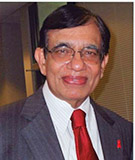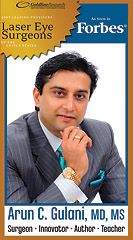
PREVENTING MEDICAL MISTAKES: PART v

Here are the rest of the take home points for you to remain healthy and prevent avoidable medical errors and mishaps:
-
Productivity (in relation to time) driven culture should be given less emphasis. One physician working for a South Florida county health system told me recently that her clinic expected her to see at least 30 patients a day; otherwise, she may lose her job. “How can you do justice to these patients? Some of them have multiple problems and are on a lot of medications that need frequent adjustments,” she says. HMOs, hospitals and other large corporations that employ doctors tend to go by the old adage, “Time is money,” but that is not good for the patients. Often, many abnormal findings are missed leading to wrong or no treatment.
-
Cultivate Pharmacovigilence: Periodic review and monitoring of all prescriptions to achieve the right balance of symptom relief while minimizing risks is absolutely essential, especially in relation to prescription drugs such as “narcotics and sedatives for non-cancer pains.” Because, drug overdose, mostly from these powerful medications, is the second leading cause of accidental deaths in the U.S. Unfortunately, the so-called “pill mills” are an ever present threat and patients have to learn to exert some self control. It is also important that prescribers (as well as the patients, I might add) of opioid analgesics understand the distinction between addiction and physical dependence and what is meant by the terms "abuse," "misuse," "aberrant behavior" and "diversion."
-
Embrace Health Information Technology: According to Medscape, “The progress in tech-based treatment in recent years is staggering; with wireless and implantable technologies emerging that just a few years ago might have seemed like science fiction.” Health IT now includes Electronic Health Records (EHRs), e-prescribing, e-mail communications with treating physicians, Electronic Medical Portals, home monitoring devices for staying on top of your illness, patient engagement tools like personal health records and more. These are definitely facilitating patient’s clinical progress, decision support, data storage, etc., that will ultimately reduce medical errors.
-
Compliance with the medications is of paramount importance and if you have any concerns, talk to your health care team before stopping any drugs. One of my patients who felt so well after taking the antihypertensive medications I prescribed because the BP returned to normal levels, decided to stop the drug without asking me! Her common refrain in the office was “Doc, I don’t like to take these medications,” to which I would respond, “Hey, I don’t like it one bit either to give you any meds but how are you going to get better otherwise?” Needless to say, she ended up in the emergency room with a stroke from uncontrolled hypertension.
Finding solutions for medical errors will involve ongoing efforts to improve patient safety practices, physician training, patient education, Health IT, creating an environment for medical providers that promotes enthusiasm and creativity, easing on the rigid governmental bureaucracy and regulations. New technologies across the globe are changing the way we treat patients. New equipment means less invasive procedures and decreasing hospital recuperation. Also, new drugs are transforming how we treat chronic conditions and rare diseases.
Physicians in general are caring and make a conscious effort to prevent medical errors. With the ever expanding capability of HIT along with many checks and balances already in place, the incidence of these medical errors has come down significantly. But caution being the better part of valor, as a patient, you must have a good grasp of your own illness and the medications you take. All patients should empower themselves with modern tools and techniques so as to maximize the benefits of therapy, minimize the complications and improve their lives.
Fortunately, Department of Health and Human Services has a new initiative with the sole focus on patient safety that promises to make an impact on the current rate of medical errors and improve patient safety. As President Obama once commented, “Your health is primarily your responsibility.” I will concur with that.
This concludes the series on Medical Errors
M.P. Ravindra Nathan, M.D., is a cardiologist and Emeritus Editor of AAPI Journal. His book “Stories from My Heart” was recently released. (www.amazon.com or www.bn.com).
Eye Care
An EYE for an EYE; wait, a Tooth will do too!

The only definitive treatment known is a corneal transplant (an invasive surgery with a lifetime of complication and rejection possibilities besides restrictive functions), which is also difficult in such places because of poor eye banking practices.
Corneoplastique is a specialty that can address most scars with innovative Laser techniques (previous KhaasBaat column) but when the entire cornea is affected, we can aspire/dream about stem cell sources. I have used human placenta in corneal diseases and today placenta is available in a contact lens that can be used in office for corneal diseases, including superficial scarring.
For a tissue as pristine and transparent as the cornea with such a pivotal role in vision (remember the shape of this clear cornea decides your vision. If it is too steep, you are nearsighted, if it is flat you are farsighted and if it shaped as a football, you have astigmatism). Lasik therefore is a way of reshaping your cornea to perfect vision.
Little wonder then that we are constantly looking for stem cells and genetic engineering for elegant ways to reproduce this cornea.
Well, seems like we do not have to look that far away from the eyes. Stem cells from the dental pulp of wisdom teeth can be coaxed to turn into cells of the eye's cornea and could one day be used to repair corneal scarring due to infection or injury, according to researchers at the University of Pittsburgh-School of Medicine. The findings, published online in STEM CELLS Translational Medicine, indicate they also could become a new source of corneal transplant tissue made from the patient's own cells.
Experiments conducted at Pittsburgh’s Department of Ophthalmology showed that stem cells of the dental pulp, obtained from routine human third molar, or wisdom tooth, extractions performed at Pitt's School of Dental Medicine, could be turned into corneal stromal cells called keratocytes, which have the same embryonic origin. The team injected the engineered keratocytes into the corneas of healthy mice, where they integrated without signs of rejection. They also used the cells to develop constructs of corneal stroma akin to natural tissue.
Stem cells are already being used to create bone and neural tissue and are the future direction of medical research. Could we one day design corneas with perfect shape and HD clarity? I shall add this to my wish list in our never-ending quest for “SuperVision.”
Arun C. Gulani, M.D., M.S., is director and chief surgeon of Gulani Vision Institute in Jacksonville. He can be reached at [email protected] or visit www.gulanivision.com